A Historical Review
From 1526 to 1757, the Mughal rulers seized and controlled great power in India. They operated the region that is present Afghanistan, Bangladesh, India, and Pakistan. The Mughal rulers rendered tremendous contribution to Indian art and culture. They are known for creating art, literature, culture, monuments, and music. Book making and library development too made an enormous contribution in shaping the rich culture of India. Syed Abdul Qadir wrote, “The libraries came into existence as a result of the love of learning of many of its Muslim rulers were a great help to the cause learning.”
Zahir-ud-Din Mohammad, Babar, the first emperor of the Mughal Empire and founder of the Mughal dynasty, was a bibliophile too. He started the library tradition in Mughal India. He established the Imperial Library and his personal library at his fort. His library had a rare collection of manuscripts which he got from his forefathers. Ferghana (now Uzbekistan), his motherland, was a place of great scholars and intellectuals. Cities like Tashkent, Bukhara, and Samarkand were knowledge hub that bred many great learned men. Babar himself was an expert in calligraphy. Of all the precious things he took over the collection of books of Ghazi Khan after his defeat in Lahore in 1525. He mentioned this in his Memoirs “After spending two nights on the rise, I inspected the fort. I went into Ghazi Khan’s book room, some of the precious things found in it, I gave to Humayun, some I sent to Kamran [in Quandahar]. There were many books of learned contents, but not so many valuable ones as had at first appeared.”
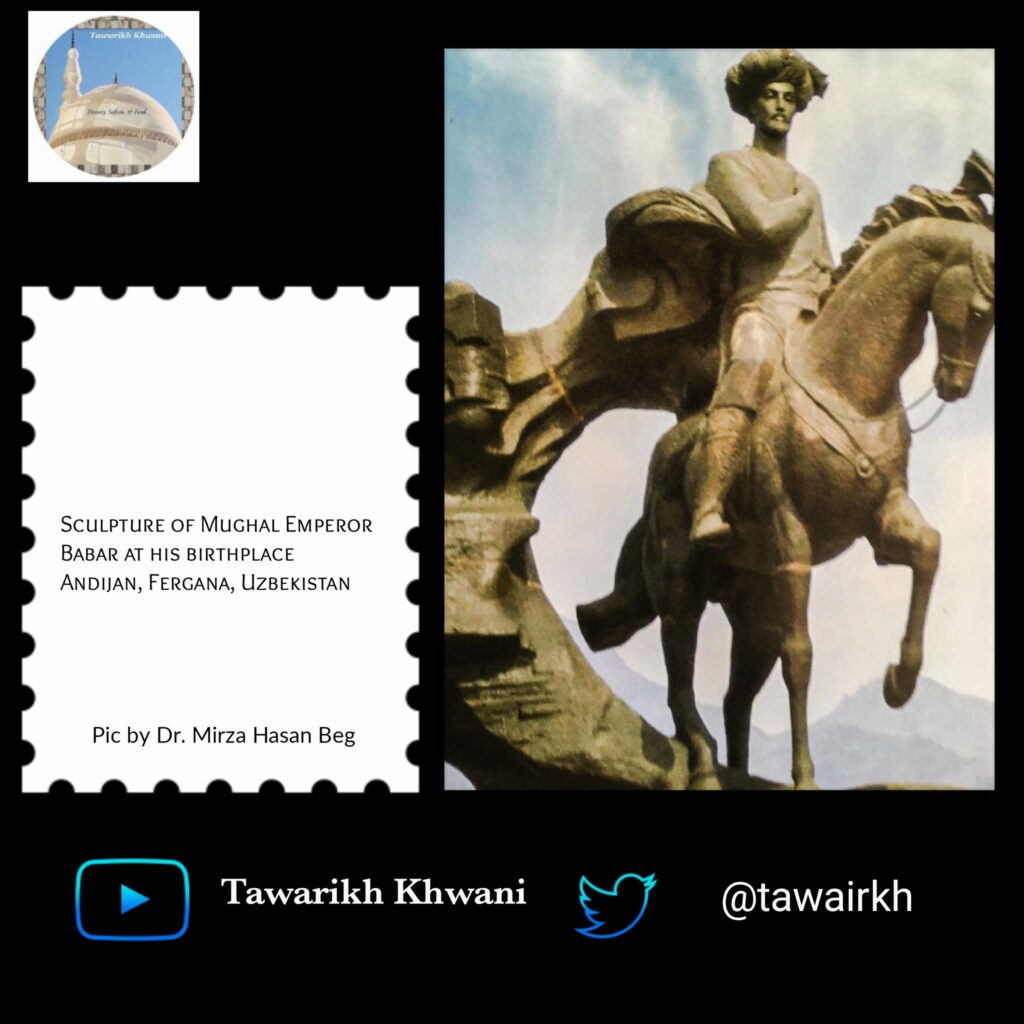
His memoirs also refer to the name of the librarian – Khwaja Mohammad Ali. Subsequently, his library was supported and enlarged by his successors. He charged the Public works department or Shuhrat-e-aam to build Maktabs(schools) and Madarsas (schools for higher learning). Each of them was equipped with books and a library.
Humayun, Babar’s son, took over the throne after him in 1530. Like his father, Humayun was also a lifelong lover of books and thus was a worthy successor. The imperial library kept on growing under the librarianship of Lai Beg at Agra. His admiration for books and learning can be seen clearly in his act of converting the Pleasure house in Purana Qila into a library. Humayun’s fondness of books went far ahead than his father when he carried a library of selected books to the battlefield. He took such library with him during the time of his expedition in Gujrat and Bengal. The magnificent building “khan-e-tilism” was built by him in Agra. In one of three main buildings, “Khan-e-Saadat” had a library in its upper part. The library was equipped with Ja namaz (prayer rug), Qalamdaan (pen case), books, Juzdaan (portfolio), and specimens of beautiful calligraphies. On one event in his childhood, when he found the books he had lost, he said, “Thank God, the treasure which cannot be got again is safe; other things are easy to obtain.”
Humayun assimilated the characteristics of his ancestors and was interested in arts, philosophy, science, and literature. Furthermore, a few volumes on the nature of elements were authored by him too. Once Humayun was sitting on the roof of the library in the premises of Old Fort, Delhi. He stumbled and fell from the stairs that fractured his skull and he died after few days on 27 January, 1556. His contribution to knowledge and learning is remarkable despite having a kingship of a very short period.
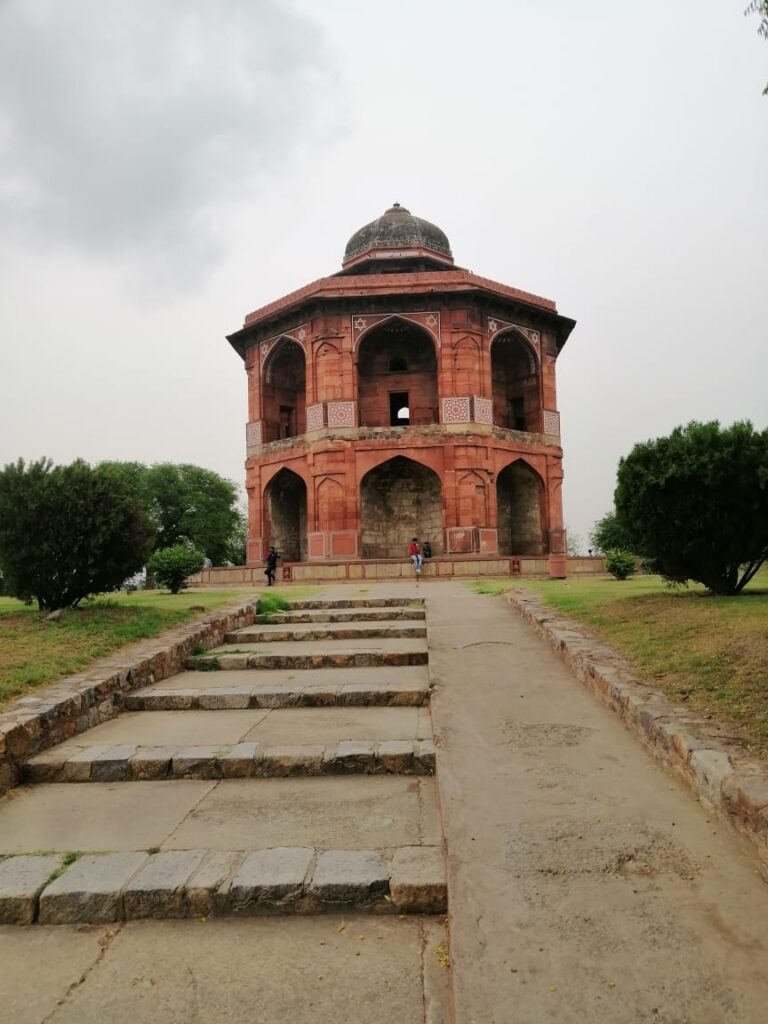
Abu’l-Fath Jalal-ud-din Muhammad Akbar, the successor of Humayun, despite being illiterate cherished libraries and learning. His emperorship brought great social-economic change through the progress and development of the libraries. Imperial library, under the possession of Akbar, inherited from his father, enriched to a great extent. The library went through many quantitative and qualitative managerial reforms which led to making it one “to which probably no parallel then existed or even has existed in the world”. The library was under the custody and administration of Faizi (brother of Abul Fazal). They were known as “Kitabdar” or “Mushaf Burdar”. They were learned, scholar librarians. The library was divided into many sections and further divided according to different languages. A separate department was dedicated to translation. Akbar’s inability to read and write did not confine him to admire learning. Through his order, many eminent scriptures and manuscripts were translated into Persian. Some of them are Atharvaveda, Ramayana, and Mahabharat. Along with the Imperial library, many personal and private libraries flourished and were common at that time. Abdul Rahim Khan-i-Khanan had a large personal library with a permanent staff of ninety-five for its care and management. Shaikh Faizi owned an enormous collection of 4,600 manuscripts. His collection merged into the imperial library after his death.
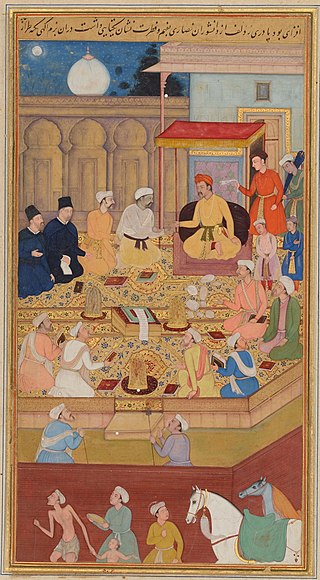
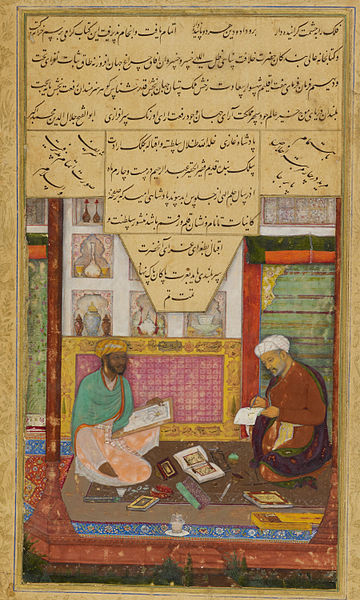
Jahangir, the fourth Mughal king took hold of the reign from 1605 till his death. Being proficient in Persian and Turkish, he too, like his ancestors, encouraged learning through enhancing the collection of existing libraries. He ordained the law of converting the property of rich heirless men into schools, libraries, and monasteries. Apart from enriching the collection of the Imperial Library, he also established the picture gallery. Maktub Khan was the supervisor of both. Besides the Imperial library, Jahangir owned a personal library which he took with him wherever he travelled.
Shah Jahan, who is famously known for building the Taj Mahal in memory of her wife Mumtaz Mahal, also founded the imperial College in Delhi and named it Dar-ul-Baqa. It is quite obvious that the educational institutions had their libraries too. In his daily routine, reading had a significant place. He took the pleasure of reading when he gets back to his Harem. Many books were written and translated into Persian under the advocacy of Dara Shikoh, the eldest son of the emperor. Exclusively for Shah Jahan, four voluminous dictionaries on varied disciplines were assembled. During his reign, Darogha Kitab-Khana was called the head librarian of the Imperial Library.
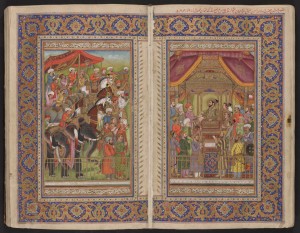
One of the most important works in the Library’s Persian collections is this manuscript known as the Pādishāh‘nāmah, also referred to as the Shāhjahān‘nāmah, which contains the history of the reign of Shah Jahan (reigned 1627–1658), the Mughal ruler of India. The work addresses the life of Shah Jahan (1592–1666), during whose reign the Taj Mahal and other architectural glories were built in India. The manuscript highlights the importance and value the Indian Mughal court gave to the tradition of bookmaking, recording history, and to Persian literary and artistic traditions. The illustrations on display depict scenes from the emperor’s private and public life, shown against images of his unique architecture.
In 1665, along with the throne, Aurangzeb took hold of the Imperial library. A staunch Muslim, intellectual man, and wise king, he was fond of reading and studying Islamic law. His keen interest in Islamic theology led him to collect books such as commentaries and explanations of Quran and Hadith which apparently augmented the imperial library collection. During his period, the library had a librarian or Nizam named Muhammad Shah. Princess Jahanra, daughter of Emperor Shahjahan, & sister of Aurangzeb, personal library was one among the best in those days. As a poet, adherent follower of Sufism, writer & patron of art, the princess Jahanara collection of books reflected great diversity. Zeb-un-Nisa, the emperor’s daughter was a well cultured and ethical lady. She was a poet too and had a huge personal collection for the use of scholars.
The death of Aurangzeb in 1707 led to the disintegration of the Mughal Empire and subsequently the decline of the imperial library. Among the successors of Aurangzeb, Bahadur Shah Zafar established some colleges and encouraged the scholars and intellectuals of the society. Shah Alam II, emperor of the crumbling Mughal Empire, started to collect books and restore Imperial Library though could retain the standard which the library earlier had. Despite many political upheavals the growth of collections of books and manuscripts in institutions like Maktabs and mosques and by renowned individuals continued to foster though slowly. Manuscripts and rare artworks were looted and carried away by the conquerors. But still in India some libraries like Rampur Raza Library, Khuda Baksh Library, and the Salar Jung Museum Library still possess considerable rare manuscripts of the Mughal period.
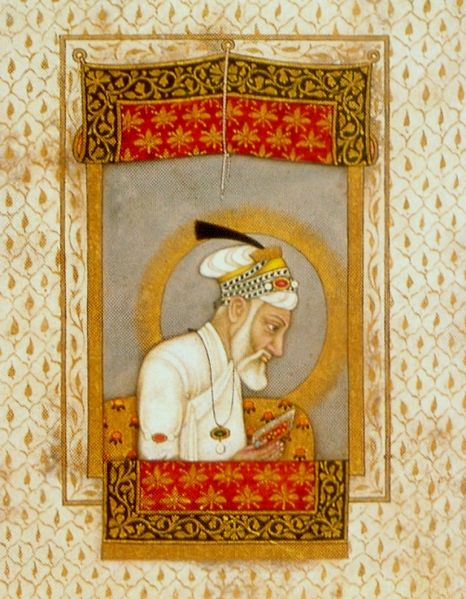

References
- Gul, Sumeer and Khan, Samina, “Growth and Development of Oriental Libraries in India” (2008). Library Philosophy and Practice (ejournal). Paper 182.
http://digitalcommons.unl.edu/libphilprac/182 - Dasgupta, K. (1975). How Learned Were the Mughals: Reflections on Muslim Libraries in India. The Journal of Library History (1974-1987), 10(3), 241-254.
http://www.jstor.org/stable/25540640 - Banerjee, D. (1996). The Story of Libraries in India. Daedalus, 125(4), 353-361.
http://www.jstor.org/stable/20027402 - Bhatt, R. K. (1995). History and Development of Libraries in India. India: Mittal Publications. https://www.google.co.in/books/edition/History_and_Development_of_Libraries_in/Jbmdowzuv0QC?hl=en&gbpv=0
Nabeel Ahmad hails from city of Nawabs, Lucknow in Uttarpradesh. He had completed his masters in Library and information science in 2020 from Aligarh Muslim University.


Great work.
A great attempt!
Thanks for this detailed and rich insight into an interesting historical subject ..
Worth reading
Good work
Libraries are great source of migration of knowledge and sharing knowledge. Despite growing dependence on Google for recovering information, books in variety of forms will remain relevant and valuable. Libraries are indispensable for sharing knowledge and its production. This article has highlighted valuable dimension of Mughal contribution to knowledge dissemination.
Very insightful
Insightful. Thank you for the information
Well researched and precise:)
Quite informative!
Well written
Very interesting!
Well written !
Well written👍
Very well ordered and precisely written